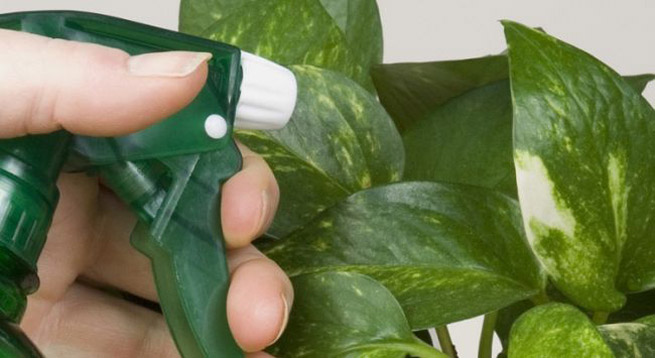Once used in love potions, and to perfume wealthy Romans, this age-old spice comes in 2 known varieties — Cinnamomum zeylanicum (Ceylon cinnamon) and Cinnamomum cassia (cassia). The cinnamon spice is obtained from the inner bark of a tropical evergreen tree and is used in both sweet and savory foods. The term “cinnamon” also refers to its mid-brown color. This spice is also both delicious AND nutritious.
The bark of the cinnamon plant is harvested during the rainy season when it is more pliable. When dried, it curls into long quills, which are either cut into lengths and sold as cinnamon sticks or ground into powder. Ceylon (or tree) is buff-colored and mildly sweet in flavor whereas cassia cinnamon is a dark reddish-brown color and has a more pungent, slightly bittersweet flavor.
Cassia cinnamon is used and sold simply as “cinnamon” in many countries (including the United States). Cinnamon is widely used in sweet dishes, but it also makes an “intriguing” addition to savory dishes such as stews and curries. Cinnamon oil comes from the pods of the cinnamon tree and is used as a flavoring, as well as a medicinal agent.
BUT did you know that cinnamon is highly beneficial for plants too?
We have written time and again about the health benefits of adding more cinnamon to your daily diet. But, this time, we are writing “in behalf of” your plants, which are, so to speak, begging you to share the cinnamon’s abundant benefits with them too.
Remember, both indoor and outdoor plants can benefit from the lavish use of the cinnamon to keep them healthy and upright year around!
Here we give you 6 uses of cinnamon on your garden plants:
1. Seedlings
We have all seen documentaries on little sea turtles, tucked away in their little sandy womb, breaking their little shells, climbing to the harsh surface, and running to the ocean for safe shelter.
The little gentle turtles may run as fast as they can (and we all know how fast that is, ha), but the faster predators easily enjoy a “baby turtle sandwich.” It is only the well-known survival of the fittest, isn’t it? Now, imagine that the same cruel thing can happen to your little lovely seedlings!
Although there may be no plant-predator birds or hungry sea sharks attacking your seeds, there are still plant diseases as dangerous to your plants as the mentioned creatures. The gardening term “dampening off” stands for an array of plant diseases that viciously attack you little seeds and lead to their early demise.
Dampening off can be caused by several different fungi and bad soil conditions. And here comes cinnamon as a proven fungus exterminator. Simple dusting your fresh soil with some cinnamon can prevent the seeds from dampening off. It is like you are helping the little baby turtles (seeds that is) to flourish in their brand new environment!
2.Wild Mushrooms
As implied earlier with the little sea turtle story, mushrooms do not like the cinnamon spice. Instead of spending an entire spring afternoon picking up the annoying wild mushrooms and weed from your garden beds, give them a little “cinnamon dusting” and watch them quickly disappear!
3. Rooting “Hormone”
Are you trying to remove chemicals from your household? This removal can be made as easy as ABC with the help of cinnamon. So, instantly stop buying chemical rooting hormones, and just apply the cinnamon powder to the stem when you plant the cut! Any rooting hormone stimulates root growth, but the cinnamon does it best.
4. Effective Ant Deterrent
People love cinnamon, don’t they? As for me, I especially love it on top of my homemade rice pudding and apple pie. But ants do NOT. Sprinkle some cinnamon around your garden beds to kill the ants, and keep them away for some time. You also have ants in the house? Do the same thing: Sprinkle some cinnamon near your entrances and watch the ants run for their lives!
5. Plant “Wound” Healer
The act of accidental cutting or “wounding” your plants may make you feel guilty and apologetic to your plant. Instead of crying over spilt plant milk, promptly brush some cinnamon on the “bleeding wound” to encourage healing and prevent infection. Oh, yes, plants can get infections too, so they have their natural resin!
6. House Plants
Do not forget to take care of your indoor plants while pruning your outdoor ones. The cinnamon helps to get rid of dangerous mold and mildew on your plants. Sprinkling some cinnamon on the soil will wipe those things out and your plants will flourish again! Any gnat problem? No, it’s not a big problem. The cinnamon gets rid of gnats in seedlings and houseplants and keeps them at bay.
To sum up, the cinnamon is a natural and affordable way to keep all your plants healthy and flourishing! So, say BYE-BYE to the nasty chemicals and say WELCOME to the good cinnamon!
WARNING: Before you start using cinnamon around your house plants and in your dishes, make sure your family members or flat mates are not allergic to the cinnamon powder. This powder is very strong, and can cause serious health problems to people who do not tolerate it! (Via: DietOfLife)
If you like this idea, be sure to share it with your friends and inspire someone you know. Anything becomes possible with just a little inspiration…

